|
| |
Practical Hygiene
Health Extra: A supplement to Issue no. 36 - March 1989
pdf
 version of
this Issue version of
this Issue
|
There is much information in this issue that is valuable
and useful. Online readers are reminded, however, that treatment guidelines and health
care practices change over time. If you are in doubt, please refer to
WHO's up-to-date Dehydration Treatment
Plans.
|
Pages 1-4 Practical Hygiene
A supplement to Dialogue on Diarrhoea Online
Issue 36 - March 1989
|
DDOnline Practical
Hygiene supplement to DD36  Page 1 2
Page 1 2
HEALTH EXTRA PRACTICAL HYGIENE Many diarrhoeal diseases are passed on by dirty food and water. Knowledge about
hygiene, and effective action in the household and the community will help prevent the
spread of disease. DD offers some practical suggestions.
How to keep drinking water clean
- Keep drinking water in a clean container, such as a bucket, in a clean place
- Keep the container off the ground, away from children and animals
- Keep the container against a wall, away from windows and the cooking area
- Always keep a clean cover over the container, even when it is empty
- Make sure that the container has no leaks or cracks, and that the lid completely covers
the mouth of the container
|
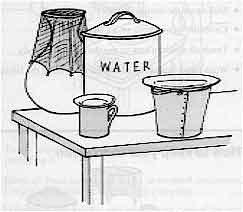 |
- Clean the cover every day, with boiling water if possible
- Rinse the bucket or other container for drinking water inside and outside each time it
is empty
- Always use the same container, such as a mug, to take water out of the bucket. Do not
use this container for any other household tasks
- Pour the water from this container into a clean cup (or clean hands) for drinking
- Never put hands or fingers into the drinking water bucket
- Do not put hands or fingers into the cup; hold it on the outside or by the handle if it
has one
- Keep the mug upside down on top of the cover
Handwashing
You should wash your hands with soap and water:
- after using the latrine/defaecating
- before cooking
- before eating or feeding children
- before breastfeeding
- after touching animals and poultry or anything dirty
- after eating
|
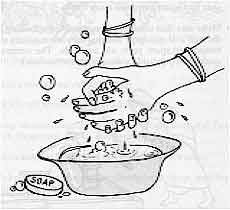 |
Keep a special cloth for drying hands; do not use clothes, which may be dirty. |
|
DDOnline Practical
Hygiene supplement to DD36  1 Page 2 3 1 Page 2 3
How to keep the community well water
supply clean
- Dig wells at least 20 metres away from latrines
- Build a head wall around the well. Do not stand on the wall
- Put a cover on the well
- Use only one container to draw water. This container should never touch the ground
- The person drawing water from the well should touch only the handle and the outside of
the bucket
|

|
|
|
- Clean out the well during the dry season
- Always keep the well walls in good repair
- Chlorinate the water regularly if possible
- Make sure that all water spilt around the well drains away quickly and completely
|
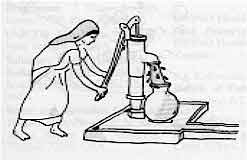 |
- If there is a standpipe, make sure that the tap works properly, and does not drip
- Keep the area around the standpipe clean, and make sure that water can drain away if
spilt
- Make sure that someone is responsible for looking after the well and standpipe and that
they are regularly maintained and spare parts are available. The community could jointly
provide a small wage for this work
How to keep your latrine clean
- Clean the walls, floor and door of the latrine regularly
- Wash out the latrine regularly if there is enough water
- Clean and wash the seat (if there is one) with soap and water
- Fill in any cracks in the walls, floor, door and roof, and keep them in good repair
- Put lime down the latrine regularly, to kill mosquitoes
- Do not put rubbish on the floor
- If there is no standpipe, keep a pot of water (and some soap, if possible) near the
latrine for handwashing
- Make sure the latrine is properly ventilated
- Cover the latrine vent with a fly screen
|
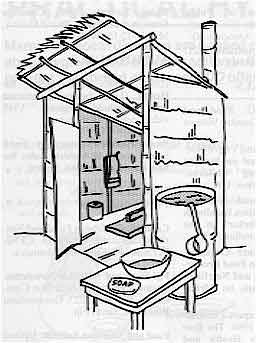 |
- Teach all children how to use the latrine properly
- Wash hands with soap and water after using the latrine
How to keep your food clean
- Keep food in a clean place
- Keep food out of the reach of children and animals
- Keep food in a cool place out of direct sunlight
|
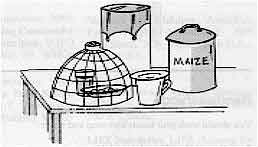
|
- Keep food covered and in clean containers
- Keep plates, cooking pots and utensils clean
- Wash hands with soap and water before cooking
- Keep fingernails short and clean
- Teach children not to touch food while you are preparing it
- Keep all food scraps and waste in covered containers. Feed it to animals, or dispose of
it every day
- Make sure that insects and other pests cannot get into food stores
- Wash all raw vegetables and peel or wash fruit in clean water
|
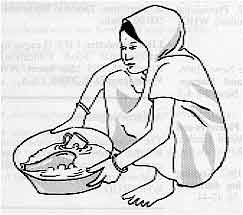 |
|
|
DDOnline Practical
Hygiene supplement to DD36  2 Page 3 4 2 Page 3 4
How to keep your neighbourhood clean
Action for the household to take
- Put all animal and human excreta into the latrine, and teach children to use the
latrine. If there is no latrine, bury or burn excreta
- Keep the latrine clean at all times
- Put all food scraps into a special container which is covered and kept out of reach of
children and animals
- Food scraps can be fed to domestic animals
- If animals are kept, keep them penned or fenced in
|
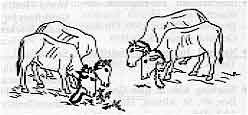
|
- Put all garbage in a container in a safe place away from children; keep it covered to
keep out flies and rats. When it is full, take it to a special pit or dump, where it can
be composted, buried or burnt
- If the community does not have a communal pit, dig a pit for the family, away from the
water source, and fence it off. Each time rubbish is put in the pit, cover it with a layer
of earth
- Fill in holes in the floor, in the street, and close to the home
- Dig drains to carry away water
- Keep the area around the home clean and free from garbage
- Make a special area where the family can bathe
Action for each community to take
- Have a communal rubbish dump
- Put a fence around the rubbish dump
- Keep streets and children's play areas clean and free from dangerous objects and garbage
- Fill in holes in the streets and children's play areas
- Make sure that the well or standpipe is clean, and that spilt water can drain away
- Dig drains to carry away waste water and rainwater from each household or communal area
|
|
DDOnline Practical
Hygiene supplement to DD36  3 Page 4 3 Page 4
SOURCES OF INFORMATION AND MATERIALS
- American Public Health Association. International Health Programmes, 1015 15th
Street, NW. Washington D.C. 20005, USA.
- Caribbean Food and Nutrition Institute, PO Box 140. Kingston 7, Jamaica.
- Child-to-child Programme, Room 833, Institute of Education, 20 Bedford Way,
London WC1H 0AL, UK.
- Food Safety Unit, World Health Organization, 1211 Geneva 27, Switzerland.
- Food and Agriculture Organization (UN), Via delle Terme di
Caracalla, 00100 Rome,
Italy.
- Institute of Nutrition and Food Sciences, University of Dhaka, Dhaka 2,
Bangladesh.
- Intermediate Technology Publications. 103-05 Southampton Row, London WC1B 4HH,
UK.
- Intermediate Technology Development Group, Myson House, Railway Terrace, Rugby
CV21 3HT, UK.
- International Development Research Center. Health Sciences Division, PO Box 8500,
Ottawa, Ontario, Canada K1G 3H9.
- National Institute of Nutrition. Tarnaka, Hyderabad. 500 007. India.
- Teaching Aids at Low Cost, PO Box 49, St Albans, Herts AL1 4AX. UK.
- UNESCO Nutrition Education Programme, 7 Place de
Fontenoy, 75700, Paris, France.
- UNICEF, UN Plaza, 4/1234C, New York 10017, USA.
- Voluntary Health Association of India, 40 Institutional Area, South of
IIT, New
Delhi 110 016. India.
- Water and Sanitation for Health Project (WASH), 1611 N Kent Street, Room
1002, Arlington, Virginia 22209, USA.
- World Federation of Public Health Associations (c/o American Public Health
Association).
- World Health Organization, 1211 Geneva 27, Switzerland.
BOOKS/MANUALS Ann Burgess, 1985. Food and Health. Associated Country Women of the World: UK.
Margaret Cameron and Yngve Hofvander. 1983. Manual on Feeding Infants and Young
Children. Oxford University Press: UK.
Caribbean Food and Nutrition Institute. 1986. Nutrition Handbook for Community
Workers in the Tropics. TALC, Macmillan: UK.
Food and Agriculture Organization, 1979. Women in Food Production, Food Handling and
Nutrition; with special emphasis on Africa. FAO: Italy.
FAO/WHO Joint Expert Committee on Food Safety,1984. The Role of Food Safety in
Health and Development. WHO Technical Report Series, No. 705.
C K O Uddoh, 1980. Nutrition. Macmillan: UK.
World Health Organization, 1981. Guidelines for Training Community Health Workers in
Nutrition. WHO Offset Publication No. 59. WHO: Switzerland.
World Health Organization. 1988. Health Education in Food Safety. WHO/EHE/FOS/88.7.
Provisional edition (limited distribution). WHO. ARTICLES BWINO Health Care News. 1986. Food Preservation and Storage. BWINO Health Care
News 30: 4-7. Zambia.
F K Kaferstein. 1988. Pleasures and Pitfalls of Eating. World Health, November:
6-7. WHO.
Amanda Mitchison. 1987. Keeping food safe - a growing dilemma. Ceres 117( vol.
20, no. 3): 42-44.
Diane Roberts, 1987. Common Sense in the Kitchen. World Health, March: 12-15.
WHO. AUDIOVISUALS IDRC, 1983. Prescription for Health. (Links between sanitation and household
hygiene). VHS video, colour, 18 minutes.
World Health Organization. Food Safety Unit, 10 Golden Rules for Safe Food
Preparation. Poster.
NEWSLETTERS/PERIODICALS Cajanus: Caribbean Food and Nutrition Institute Quarterly.
CFNI, PO Box 140.
Kingston 7, Jamaica.
Fiji Food and Nutrition Newsletter. National Food and Nutrition Committee, P O
Box 2223, Government Buildings, Suva, Fiji.
Food and Nutrition Bulletin, United Nations University. Academic Publications
Services. Toho Seimei Building, 15-1 Shibuya 2-chome, Shibuya-ku, Tokyo 150, Japan.
Mothers and Children, American Public Health Association, 1015 15th Street. NW,
Washington D.C., 20037, USA.
Nutrition News, National Institute of Nutrition,
Tarnaka, Hyderabad 500 007,
India.
LIFE Newsletter. LIFE (League for International Food Education), Room 915, 915
15th Street, NW. Washington D.C. 20005, USA. Acknowledgement The information and illustrations in this insert are
taken from unpublished material on child survival in or near cities. prepared for
WHO/RUD.
|
Practical Hygiene
Health Extra - A supplement to Issue no. 36 March 1989
Page Navigation
This edition of Dialogue on Diarrhoea Online is
produced by Rehydration Project.
Dialogue on Diarrhoea was published four times a year in English,
Chinese, French, Portuguese, Spanish, Tamil, English/Urdu and Vietnamese and
reached more than a quarter of a million readers worldwide.
The
English edition of Dialogue on Diarrhoea was produced and distributed by
Healthlink
Worldwide.
Healthlink Worldwide is committed to strengthening primary health care and
community-based rehabilitation in the South by maximising the use and impact
of information, providing training and resources, and actively supporting
the capacity building of partner organisations. - ISSN 0950-0235 Reproducing articles
Healthlink Worldwide encourages the reproduction of
articles in this newsletter for non-profit making and educational uses. Please
clearly credit Healthlink Worldwide as the source and, if possible, send us a copy of any
uses made of the material.
|
updated: 4 March, 2016
|
version of this Issue